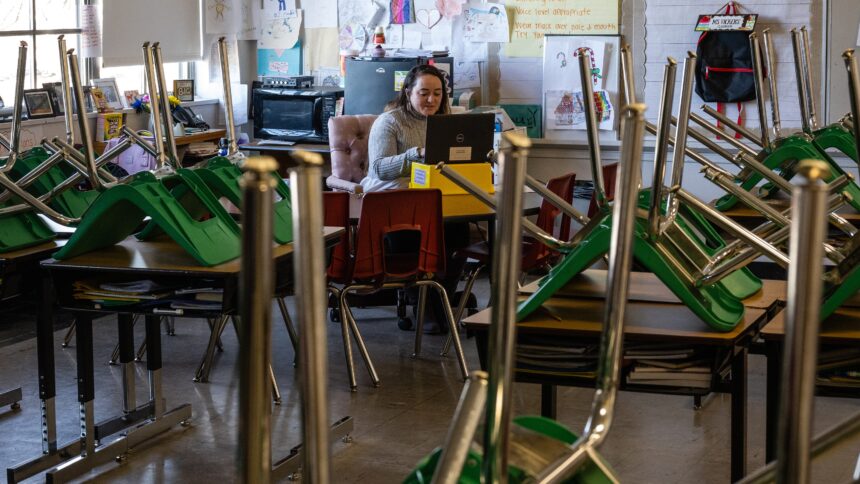Nearly 9 in 10 public school districts struggled to hire teachers heading into the school year, and many potential hires were deterred by low salaries.
The detail is one of many that emerged Tuesday from the National Center for Education Statistics’ monthly survey of public schools. The federal agency, a data-collecting arm of the Education Department, surveyed more than 1,300 K-12 schools in mid-August, providing a glimpse into how the 2023-24 school year is shaping up.
The shortages were most common in subjects that generally have been difficult to fill for years: special education, science and foreign languages.
While the survey, which only captures sentiment at a sliver of the nation’s public schools, shows that overall sentiments about staffing have improved somewhat since last year, high-poverty districts continue to report understaffing. For the current school year, 45% of all public schools reported feeling understaffed. That’s down from 53% in the last school year’s survey.
A relatively significant decline came for schools in low-poverty neighborhoods. They saw a 10-point drop in perceptions of understaffing, from 52% reporting feeling understaffed in the last school year to 42% this year. Yet in high-poverty neighborhoods, wariness of understaffing persisted at 57%, the same level as last school year.
American classrooms need more educators.Can virtual teachers step in to bridge the gap?
Bus drivers still hard to hire, but vacancies for transportation staff ease
The survey also provides a fresh look at what the school bus driver shortage looks like this academic year. Schools reported that transportation staff were the most difficult nonteaching position to fill: Only 8% of schools called it an “easy” job to find workers for.
“The stark issue with the school bus drivers is pretty significant,” said Chris Chapman, a statistician for NCES, on a call with reporters Monday.
A USA TODAY analysis in August of news coverage and local statistics found at least one instance of a major school bus driver shortage in every state this calendar year.
Why so few school bus drivers?Problem worsened by COVID reaches crisis level
On the whole, vacancies for transportation staff are down, according to the NCES survey. For the 2022-23 school year, 51% of schools reported vacancies. That number decreased to 39% this school year.
Another big takeaway from the survey: Schools nationwide seem to be leaning more heavily on community nonprofits and local government agencies to provide services such as social work and parenting support to students and families. The number of schools using this type of “wraparound services model” increased from 45% to 60% of schools.
And far fewer schools are offering internet to their students at home compared with a few years ago: 44% are doing so this year, compared with 70% in the 2021-22 school year.
Zachary Schermele is a breaking news and education reporter for USA TODAY. You can reach him by email at zschermele@usatoday.com. Follow him on X at @ZachSchermele.











